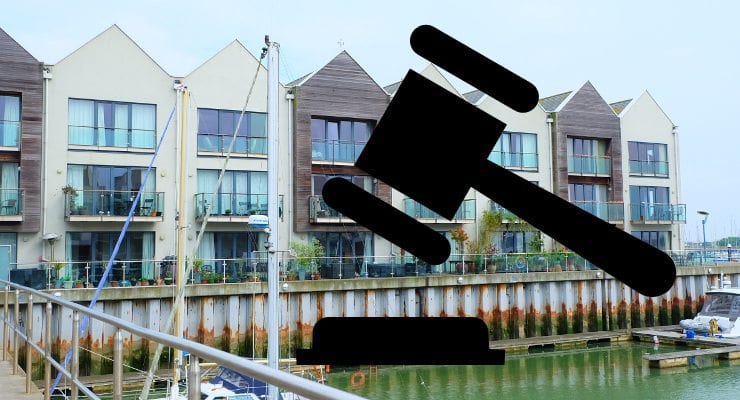How to Change Toilet Flappers on Your Own
Toilet tank flapper replacement is an easy-to-do DIY project that only requires a few basic tools and takes 10 to 15 minutes of your time. Before you start, make sure you’ve shut off the water from the valve and drain your toilet tank by flushing it several times. Afterwards, there are only 5 steps that you’ll need to follow.
Determine if the flapper runs properly before you start
Standard toilet models have a toilet lid that can be easily lifted after you’ve pressed the flush button. Once you’ve done that, place the cover on an even surface at a safe distance to prevent damage.
Sometimes, small gaps and cracks are hard to detect. To check for such, perform a dye test to determine if you need to replace the flapper. Inspect for potential leaks by adding up to 20 drops of food colouring into the tank while it’s filled with water. After half an hour, check if the dye has made its way to the bowl. The faster it seeps into the bowl, the more severe the leak is.
Another method to determine if you need to change the flapper is to press it on with your finger. If the water stops running in the toilet bowl, it indicates that the flapper needs replacement.
A worn-out or cracked flapper contributes to a huge amount of water waste for your household, and it can lead to water damage. That’s why if you detect issues with it, the best course of action is to replace it.
#1 Shut off the water before disassembling
Locate the shut-off valve of the toilet. To stop the water supply to it, turn the shut-off valve handle clockwise. Flushing the toilet several times will help to drain the tank completely, and with the water supply disconnected, the tank won’t be refilled.
#2 Disassemble
Before you start disassembling the toilet tank, it’s recommended to take a few pictures of its mechanisms from different angles so you’ll know how to put the connections back together once you’re finished with the procedure.
Once you’ve done that, unhook the flapper sides from the pins located at the bottom of the overflow tube. Do this very carefully, as the parts are thin and fragile.
This will likely be the trickiest part of the project, but once you’ve taken the flapper out of the tank and it’s free, you’re ready to continue with the easier part of the process.
#3 Clean the flapper and the area below its location
Once you’ve reached this step of the replacement process, you might realise that the flapper isn’t actually defective. It might just be grimy and covered with hard water deposits. Inspect it closely and clean its surface. If the part doesn’t appear stiff or cracked, clean any mineral deposits, mould or dirt residual from it and the area below where it’s located.
At this stage, plumbing experts recommend testing the toilet for leaks one more time, as simple adjustments or cleaning might be all that it needs. However, even if the flapper needs to be replaced, still clean the area with appropriate detergents.
#4 Replace the faulty flapper with a new matching part
Allow the new flapper to fall into place, and carefully connect the hooks to the pins on the overflow pipe while following the previous configurations from the photos you took.
#5 Test one last time
Once you’ve restored the assembly, turn the water on. Refill the tank and keep an eye for signs of continuously running water. While the lid is open, monitor if the parts work simultaneously and without disruptions.
To test if you’ve installed the flapper properly, repeat the dye test again. If the water in the bowl doesn’t colour and is clear, you’ve performed the task successfully.
Additional tips for toilet flapper replacement
When it comes to toilet flappers, one size doesn’t fit all. To avoid choosing the wrong size flapper, disassemble the worn-out or faulty component and pick an exact match. Otherwise, you run the risk of malfunctions in the near future.
If you are unsure what the right size and shape toilet flapper is for you, there are a few things that will help you determine that.
Determine the right size
Look for a toilet model number inside the toilet tank or on the cistern lid. Having the serial number will help you find out the toilet manufacturer and a flapper that’s the right fit. Determine the correct size by reaching the bottom of your tank, disassembling the fittings and measuring the inner diameter of the small circular shape.
Contact the manufacturer
Sometimes, the problem can be that not all flappers adhere to universal models. In such cases, contact the manufacturer for further information and advice on where you can purchase a matching part.
Consider older vs newer models
Often, the time when your toilet model was manufactured can also help you determine the right size and shape for your flapper. Older toilets made before the 90s typically have a smaller drain, while the new ones are equipped with bigger flappers.
Know the capacity of your toilet tank
Selecting the right size and shape for your flapper will be easier if you know how much water your toilet can flush. As a general rule of thumb, bigger flappers are designed for toilets that flush between 1.3 and 1.6 gallons of water, while models that flush less require smaller flappers.
Decide between flexible vs solid frame
If you’re in a dilemma about choosing a flexible or solid frame, it’s generally advised to opt for a solid one because it typically doesn’t twist and is less susceptible to damage.
Choose rubber, silicone, plastic or a mixture flapper
The best flapper types are made of rubber, silicone, plastic or a mixture of these materials. This is because they work best to seal the valve.
If you’re trying to reduce your water footprint, it’s recommended to opt for a rubber flapper with adjustable settings.
Bottomline
A faulty flapper that needs replacement is one of the most common plumbing issues households with standard toilets face. Besides making an irritating noise of constantly running water, this problem contributes to a huge amount of water waste and adds to your water bills. Luckily, fixing such leaks is usually a simple project that you can take up on your own without the requirement of any specialised equipment or training.









